A team of astronomers watch as a failed solar eruption occurs on the surface of the Sun, leaving astronomers with a wealth of data captured by several NASA organizations and ground-based telescopes.
Watch the video to view the observations and models that enabled scientists to track the failed solar eruption from its onset up through the solar atmosphere — and ultimately understand why it faded away.
On September 30, 2014, multiple NASA observatories watched what appeared to be the beginnings of a solar eruption. A filament — a serpentine structure consisting of dense solar material and often associated with solar eruptions — rose from the surface, gaining energy and speed as it soared. But instead of erupting from the Sun, the filament collapsed, shredded to pieces by invisible magnetic forces.
Because scientists had so many instruments observing the event, they were able to track the entire event from beginning to end, and explain for the first time how the Sun’s magnetic landscape terminated a solar eruption. Their results are summarized in a paper published in The Astrophysical Journal on July 10, 2017.
“Each component of our observations was very important,” said Georgios Chintzoglou, lead author of the paper and a solar physicist at Lockheed Martin Solar and Astrophysics Laboratory in Palo Alto, California, and the University Corporation for Atmospheric Research in Boulder, Colorado. “Remove one instrument, and you’re basically blind. In solar physics, you need to have good coverage observing multiple temperatures — if you have them all, you can tell a nice story.”
The study makes use of a wealth of data captured by NASA’s Solar Dynamics Observatory, NASA’s Interface Region Imaging Spectrograph, JAXA/NASA’s Hinode, and several ground-based telescopes in support of the launch of the NASA-funded VAULT2.0 sounding rocket. Together, these observatories watch the Sun in dozens of different wavelengths of light that reveal the Sun’s surface and lower atmosphere, allowing scientists to track the eruption from its onset up through the solar atmosphere — and ultimately understand why it faded away.
The day of the failed eruption, scientists pointed the VAULT2.0 sounding rocket — a sub-orbital rocket that flies for some 20 minutes, collecting data from above Earth’s atmosphere for about five of those minutes — at an area of intense, complex magnetic activity on the Sun, called an active region. The team also collaborated with IRIS to focus its observations on the same region.
“We were expecting an eruption; this was the most active region on the Sun that day,” said Angelos Vourlidas, an astrophysicist at the Johns Hopkins University Applied Physics Laboratory in Laurel, Maryland, principal investigator of the VAULT2.0 project and co-author of the paper. “We saw the filament lifting with IRIS, but we didn’t see it erupt in SDO or in the coronagraphs. That’s how we knew it failed.”
The Sun’s landscape is controlled by magnetic forces, and the scientists deduced the filament must have met some magnetic boundary that prevented the unstable structure from erupting. They used these observations as input for a model of the Sun’s magnetic environment. Much like scientists who use topographical data to study Earth, solar physicists map out the Sun’s magnetic features, or topology, to understand how these forces guide solar activity.
Chintzoglou and his colleagues developed a model that identified locations on the Sun where the magnetic field was especially compressed, since rapid releases of energy — such as those they observed when the filament collapsed — are more likely to occur where magnetic field lines are strongly distorted.
“We computed the Sun’s magnetic environment by tracing millions of magnetic field lines and looking at how neighboring field lines connect and diverge,” said Antonia Savcheva, an astrophysicist at the Harvard-Smithsonian Center for Astrophysics in Cambridge, Massachusetts, and co-author of the paper. “The amount of divergence gives us a measure of the topology.”
Their model shows this topology shapes how solar structures evolve on the Sun’s surface. Typically, when solar structures with opposite magnetic orientations collide, they explosively release magnetic energy, heating the atmosphere with a flare and erupting into space as a coronal mass ejection — a massive cloud of solar material and magnetic fields.
But on the day of the September 2014 near-eruption, the model indicated the filament instead pushed up against a complex magnetic structure, shaped like two igloos smashed against each other. This invisible boundary, called a hyperbolic flux tube, was the result of a collision of two bipolar regions on the sun’s surface — a nexus of four alternating and opposing magnetic fields ripe for magnetic reconnection, a dynamic process that can explosively release great amounts of stored energy.
“The hyperbolic flux tube breaks the filament’s magnetic field lines and reconnects them with those of the ambient Sun, so that the filament’s magnetic energy is stripped away,” Chintzoglou said.
This structure eats away at the filament like a log grinder, spraying chips of solar material and preventing eruption. As the filament waned, the model demonstrates heat and energy were released into the solar atmosphere, matching the initial observations. The simulated reconnection also supports the observations of bright flaring loops where the hyperbolic flux tube and filament met — evidence for magnetic reconnection.
While scientists have speculated such a process exists, it wasn’t until they serendipitously had multiple observations of such an event that they were able to explain how a magnetic boundary on the Sun is capable of halting an eruption, stripping a filament of energy until it’s too weak to erupt.
“This result would have been impossible without the coordination of NASA’s solar fleet in support of our rocket launch,” Vourlidas said.
This study indicates the Sun’s magnetic topology plays an important role in whether or not an eruption can burst from the Sun. These eruptions can create space weather effects around Earth.
“Most research has gone into how topology helps eruptions escape,” Chintzoglou said. “But this tells us that apart from the eruption mechanism, we also need to consider what the nascent structure encounters in the beginning, and how it might be stopped.”
Reference: “Magnetic Flux Rope Shredding By a Hyperbolic Flux Tube: The Detrimental Effects of Magnetic Topology on Solar Eruptions” by Georgios Chintzoglou, Angelos Vourlidas, Antonia Savcheva, Svetlin Tassev, Samuel Tun Beltran and Guillermo Stenborg, 10 July 2017, The Astrophysical Journal.
DOI: 10.3847/1538-4357/aa77b2
PDF



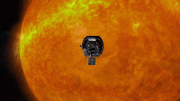
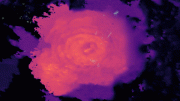
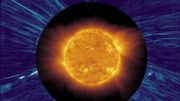
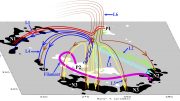
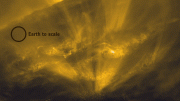
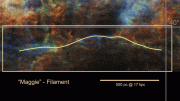
Being ont he life of a lfoe as o fnow.